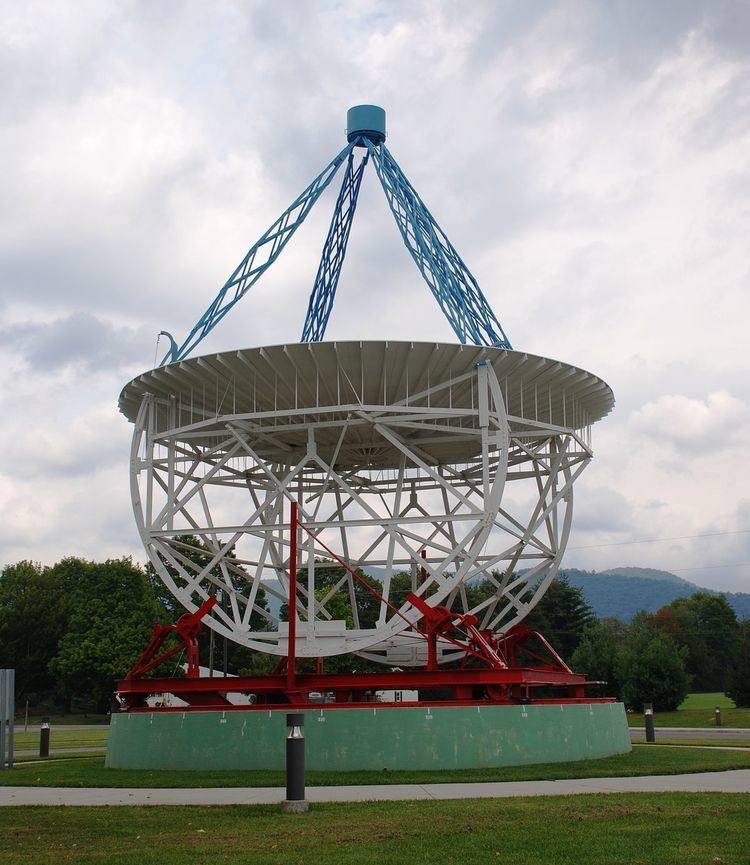Built 1937 Designated NHL December 20, 1989 Area 1,214 m² Nearest city Green Bank | NRHP Reference # 72001291 Opened 1937 Added to NRHP 9 November 1972 | |
 | ||
Similar Green Bank Observatory, Green Bank Telescope, Parkes Observatory | ||
Reber Radio Telescope is a parabolic radio telescope built by astronomer Grote Reber in his back yard in Illinois in 1937, implementing an earlier proposal of Karl Jansky, the discoverer (1931) of radio waves emanating from the Milky Way. It was the second radio telescope ever built (after Jansky's dipole array), and the first parabolic radio telescope, serving as a prototype for the first large dish radio telescopes such as the Green Bank Telescope and Lovell Telescope constructed after World War 2. Made of sheet metal with a 31.4 foot (9 meter) aperture and 20 foot (6 meter) focal length, it was the largest parabolic dish in existence at the time. Reber was the world's only radio astronomer at the time, and his construction of the telescope and the sky surveys he did with it helped found the field of radio astronomy, revealing radio sources such as Cassiopeia A and Cygnus X-1 for the first time.
Reber sold the telescope to the US National Bureau of Standards and it was moved to Sterling, Virginia, then later it became the property of the National Radio Astronomy Observatory (NRAO) and was moved to Boulder, Colorado, and finally to Green Bank, West Virginia.
It was listed on the National Register of Historic Places in 1972 and declared a National Historic Landmark in 1989.
